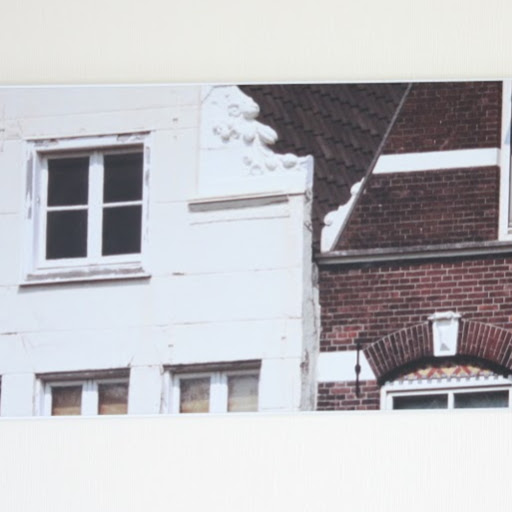Joseph P Mathis
age ~40
from Moscow Mills, MO
- Also known as:
-
- Joseph Peter Mathis
- Joe Mathis
- Jack Mathis
Joseph Mathis Phones & Addresses
- Moscow Mills, MO
- Troy, MO
- Kansas City, MO
- Pawnee, IL
- Austin, TX
- Chelsea, AL
- Crestview, FL
Work
-
Company:Illinois Court of Claims
-
Address:630 S College St, Springfield, IL 62704
Ranks
-
Licence:Illinois - Active And Authorized To Practice Law
-
Date:1983
Resumes

Joseph Mathis
view source
Joseph Mathis
view source
Joseph Mathis
view source
Joseph Mathis
view sourceLocation:
United States

Joseph Mathis
view sourceLocation:
United States

Joseph Mathis
view sourceLocation:
United States

Joseph Mathis
view sourceLocation:
United States
Name / Title
Company / Classification
Phones & Addresses
Director of Data Processing
Motive, Inc
Prepackaged Software Services
Prepackaged Software Services
12515 Res Blvd, Austin, TX 78759
5123398335
5123398335
Information Technology Manager, Director of Data Processing
MOTIVE COMMUNICATIONS, INC
Communication Services · Prepackaged Software Services · Computer Sales · Prepackaged Software · Motor Vehicle Parts and Accessories · Computer & Software Stores
Communication Services · Prepackaged Software Services · Computer Sales · Prepackaged Software · Motor Vehicle Parts and Accessories · Computer & Software Stores
12515 Research Blvd BLDG 5, Austin, TX 78759
C/O Corporation Service Company, Hartford, CT 06106
12515 Res Blvd, Austin, TX 78759
5123398335, 5123399040, 5125311980, 5125312492
C/O Corporation Service Company, Hartford, CT 06106
12515 Res Blvd, Austin, TX 78759
5123398335, 5123399040, 5125311980, 5125312492
Us Patents
-
Input/Output Initiate Command Mechanism
view source -
US Patent:54448549, Aug 22, 1995
-
Filed:Mar 6, 1992
-
Appl. No.:7/849643
-
Inventors:Joseph R. Mathis - Georgetown TX
Richard R. Oehler - Somers NY
Carl Zeitler - Austin TX -
Assignee:International Business Machines Corporation - Armonk NY
-
International Classification:G06F 1300
-
US Classification:395825
-
Abstract:A data processing system including a processor that issues communications commands on a first communications channel and a peripheral device that is connected to the first communications channel and to a second communications channel that operates asynchronously relative to the first communications channel. The peripheral device performs communications operations specified from the commands from the processor and further responds to communications over the second communications channel. The peripheral device includes a controller that provides a status word to the processor in response to the command issued to the peripheral device. The status word indicates the status condition of the peripheral device at the time when the peripheral device initiates the operation specified by the issued command.
-
System For Dma Block Data Transfer Based On Linked Control Blocks
view source -
US Patent:52513033, Oct 5, 1993
-
Filed:Jan 13, 1989
-
Appl. No.:7/297778
-
Inventors:Richard G. Fogg - Austin TX
Joseph R. Mathis - Georgetown TX
James O. Nicholson - Austin TX -
Assignee:International Business Machines Corporation - Armonk NY
-
International Classification:G06F 1328
-
US Classification:395275
-
Abstract:A DMA controller has an attached, dedicated memory. Data objects are stored on the heap and connected by pointers. Each data object contains DMA block transfer control parameters. A single block transfer made up of several separate transfers, with each separate transfer defined by one data object. The single block transfer is defined by linking several data objects into a list. The DMA controller consecutively performs the transfers in a linked list without requiring control by a system central processor.
-
System And Method For Data Communications
view source -
US Patent:49950568, Feb 19, 1991
-
Filed:Jan 13, 1989
-
Appl. No.:7/297776
-
Inventors:Richard G. Fogg - Austin TX
Joseph R. Mathis - Georgetown TX
Carl Zeitler - Austin TX -
Assignee:International Business Machines Corporation - Armonk NY
-
International Classification:H04B 138
-
US Classification:375 7
-
Abstract:In a communications system, a sending system and a receiving system have multiple data buffers. In response to an inquiry from the sending system, the receiving system transmits information which indicates the size and number of data buffers available in the receiving system. The sending system then begins transmitting data frames, which are placed into the buffers of the receiving system. When the receiving system removes all of the data from a buffer, therefore freeing it to accept additional data, it sends a signal to the sending system indicating this fact. The sending system counts such signals, and ensures that the number of transmitted data frames does not exceed the number of frames which have been removed from the receiver's buffers by more than the number of buffers which the receiver has.
-
Transfer Direction Turnaround In Network Data Communications
view source -
US Patent:50540190, Oct 1, 1991
-
Filed:Jan 13, 1989
-
Appl. No.:7/297777
-
Inventors:Joseph R. Mathis - Georgetown TX
Gerald L. Rouse - Round Rock TX -
Assignee:International Business Machines Corporation - Armonk NY
-
International Classification:H04B 320
H04L 516 -
US Classification:370 31
-
Abstract:In a network communications system, data is transferred from a first node to a second node. When requested, the second node can transmit a data direction turnaround message to the first node, followed by transferring data to the first node. Data transfer in both directions is made during a single communications link within the network. The turnaround message can function as an acknowledgement of successful transfer to the data transferred from the first node to the second node.
Lawyers & Attorneys

Joseph Michael Mathis Jr., Springfield IL - Lawyer
view sourceAddress:
Illinois Court of Claims
630 S College St, Springfield, IL 62704
2177820111 (Office)
630 S College St, Springfield, IL 62704
2177820111 (Office)
Licenses:
Illinois - Active And Authorized To Practice Law 1983
Googleplus

Joseph Mathis
Education:
University of North Carolina at Chapel Hill

Joseph Mathis

Joseph Mathis

Joseph Mathis

Joseph Mathis

Joseph Mathis

Joseph Mathis
Plaxo

Joseph Mathis
view sourceRetired

joseph mathis
view sourceTJUH
Youtube
Classmates

Joseph Mathis
view sourceSchools:
North Vernon High School North Vernon IN 1953-1957
Community:
Linda Landry, Diana Taylor

Joseph Mathis
view sourceSchools:
John L. Kinsey Elementary School Philadelphia PA 1930-1936, Woodrow Wilson Middle School Philadelphia PA 1938-1940
Community:
Arlene Craighead, Judy Banks

Joseph Mathis
view sourceSchools:
Our Lady Good Counsel School Little Rock AR 1967-1974
Community:
Pamela Bertram, Charles Watkins, Mark Graves, Mark Phillips

Joseph Mathis
view sourceSchools:
New Smyrna Beach High School New Smyrna Beach FL 1978-1982

Joseph Mathis
view sourceSchools:
Elsinore High School Wildomar CA 1989-1993
Community:
Steve Felber

Joseph Mathis, Newburg Hi...
view source
Joseph Mathis, Laramie Hi...
view source
Killeen High School, Kill...
view sourceGraduates:
Joseph Mathis (1997-2001),
Joseph Mathis (1955-1959),
Fred Wilson (1975-1979),
Robert Gray (1980-1984)
Joseph Mathis (1955-1959),
Fred Wilson (1975-1979),
Robert Gray (1980-1984)

Joseph R Mathis
view source
Joseph William Mathis
view source
Joseph Mathis Sr
view source
Joseph Mathis
view source
Joseph Jack Mathis
view source
Joseph Allen Mathis
view source
Joseph R Mathis
view source
Joseph Kushman Mathis
view sourceFlickr
Myspace
Get Report for Joseph P Mathis from Moscow Mills, MO, age ~40


















